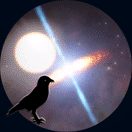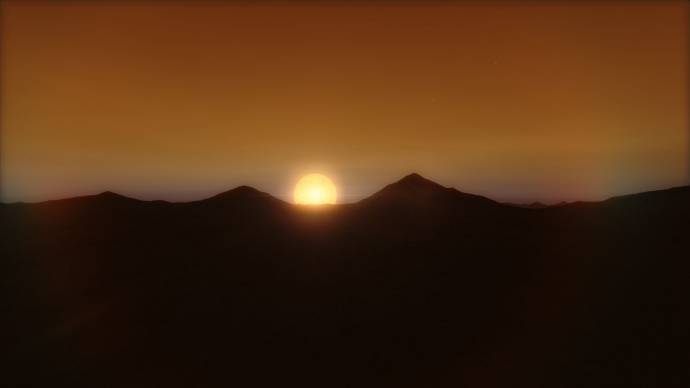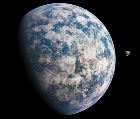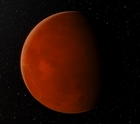|
Exoplanet News Thread
|
|
| Jadestar | Date: Sunday, 15.11.2015, 07:49 | Message # 211 |
|
Astronaut
Group: Users
 United States
United States
Messages: 70
Status: Offline
| Surprised no one has posted about this nearby Venus twin just discovered with Harvard's MEarth project. The nearest rocky Earth sized planet with a near certainty of having an atmosphere. Fascinating planet and near enough to assess its atmosphere with Spitzer, Hubble and the JWST.
While not as exciting as finding a nearby Earth twin it will test whether tidally locked or slowly rotating planets around red dwarfs circulate their atmospheres efficiently.
There are also hints there may be other planets in the system. One in the habitable zone.
http://www.space.com/31085-closest-earth-size-exoplanet-venus-twin.html
|
| |
| |
| JackDole | Date: Sunday, 15.11.2015, 19:32 | Message # 212 |
 Star Engineer
Group: Local Moderators
 Germany
Germany
Messages: 1742
Status: Offline
| 'Venus twin' Exoplanet GJ 1132 b

Don't forget to look here.

|
| |
| |
| Wicker1M | Date: Monday, 30.11.2015, 22:39 | Message # 213 |
 Astronaut
Group: Users
 United States
United States
Messages: 57
Status: Offline
| Can GJ 504 b actually be a low mass brown dwarf rather than a planet? There is an article by K. Fuhrmann and R. Chini in the Astrophysical Journal that says that the parent star GJ 504 is much older and more evolved than previously thought, so that GJ 504 b is thus a low mass brown dwarf. How is that possible since GJ 504 b is much less than 13 Jupiter masses?
Also, GJ 504 b is deep magenta in color. In Space Engine version .973, GJ 504b does not appear magenta in color. Why is that? Especially since HD 189733b has its deep blue color realistically portrayed in Space Engine.
Edited by Wicker1M - Monday, 30.11.2015, 22:44 |
| |
| |
| Watsisname | Date: Wednesday, 02.12.2015, 07:17 | Message # 214 |
 Galaxy Architect
Group: Global Moderators
 United States
United States
Messages: 2613
Status: Offline
| Yeah, that's how it often works out with planets detected by direct imaging. What we're actually measuring here is the luminosity of the planet (usually in infrared), so the derived mass is poorly constrained and will depend on the age of the system. It's kind of funny that it works out that way -- you'd think that "direct imaging" would imply a better measurement of the planet's properties, but it's actually much less precise than, say, radial velocity + transit depth.
Since the newer observations suggest an older age of GJ 504, this changed the estimate of the mass of the companion, from a Jovian to a low-mass brown dwarf.

|
| |
| |
| Wicker1M | Date: Saturday, 12.12.2015, 00:00 | Message # 215 |
 Astronaut
Group: Users
 United States
United States
Messages: 57
Status: Offline
| How does one draw the line between brown dwarf and planet? When does a planetary mass object become a brown dwarf instead of a gas giant like Jupiter? Is there a spectrum or gradient between Jupiter-size planets, brown dwarfs, and stars?
|
| |
| |
| SpaceEngineer | Date: Saturday, 12.12.2015, 11:31 | Message # 216 |
 Author of Space Engine
Group: Administrators
 Russian Federation
Russian Federation
Messages: 4800
Status: Offline
| Quote Wicker1M (  ) lso, GJ 504 b is deep magenta in color. In Space Engine version .973, GJ 504b does not appear magenta in color. Why is that? Especially since HD 189733b has its deep blue color realistically portrayed in Space Engine.
Because color data has was not added in exoplanets catalog for GJ 504 b, but was added for HD 189733 b.
Quote Wicker1M (  ) How does one draw the line between brown dwarf and planet? When does a planetary mass object become a brown dwarf instead of a gas giant like Jupiter?
13 jupiter mass is a theoretical lower limit for deiterium + lithium fusion starts. However, not all observations gives true mass of an object, and this is a problem.
Quote Wicker1M (  ) Is there a spectrum or gradient between Jupiter-size planets, brown dwarfs, and stars?
If object have lithium lines in spectrum and luminosity below M-dwarf stars, it must be a brown dwarf. Lithium burns very fast in fusion reactions in stars, only brown dwarfs can have it, becuase they burn slowly and lithium is a fuel for them.

|
| |
| |
| kham132 | Date: Saturday, 19.12.2015, 04:48 | Message # 217 |
 Space Pilot
Group: Users
 United States
United States
Messages: 114
Status: Offline
| A very recent find, Wolf 1061c, a planet 14 light years away that is in the habitable zone!
https://en.m.wikipedia.org/wiki/Wolf_1061_c
Let's hope NASA has some plans to send a probe there in our lifetimes.
"Fancy and inspirational quote."
- Famous Person
|
| |
| |
| JackDole | Date: Saturday, 19.12.2015, 17:03 | Message # 218 |
 Star Engineer
Group: Local Moderators
 Germany
Germany
Messages: 1742
Status: Offline
| kham132,
I have created a script for Wolf 1061 exoplanets. Look here:
Quote JackDole (  ) Wolf 1061 Exoplanets:
if you're interested.
Don't forget to look here.

|
| |
| |
| JackDole | Date: Sunday, 20.12.2015, 19:13 | Message # 219 |
 Star Engineer
Group: Local Moderators
 Germany
Germany
Messages: 1742
Status: Offline
| Monster planet is 'dancing with the stars'
This system is in SE, but there is the M-Star a planet.
Don't forget to look here.

|
| |
| |
| pzampella | Date: Monday, 21.12.2015, 14:47 | Message # 220 |
 Space Pilot
Group: Users
 Venezuela
Venezuela
Messages: 115
Status: Offline
| JackDole, the fact of having a Wolf-Rayet host star wouldn't be an issue for habitability?
|
| |
| |
| JackDole | Date: Monday, 21.12.2015, 15:25 | Message # 221 |
 Star Engineer
Group: Local Moderators
 Germany
Germany
Messages: 1742
Status: Offline
| Quote pzampella (  ) JackDole, the fact of having a Wolf-Rayet host star wouldn't be an issue for habitability?
Which Wolf-Rayet star? Wolf 1061 is not a Wolf-Rayet star, it is an M3 star.
Don't forget to look here.

|
| |
| |
| Jadestar | Date: Tuesday, 19.01.2016, 18:49 | Message # 222 |
|
Astronaut
Group: Users
 United States
United States
Messages: 70
Status: Offline
| I came across this this morning. Apparently there's an unpublished possible detection of what may be a terrestrial sized planet around our nearest star, the red dwarf Proxima Centauri! 
From the comments section of Centauri Dreams: http://www.centauri-dreams.org/?p=34844#comments
Guillem January 18, 2016 at 13:22
Dear Bynaus
I’m Guillem from Pale Red Dot. Yes, we have evidence for a signal from high cadence observations with HARPS (unpublished but publicly available) where the star seems to wobble over the course of two separate 10 day runs. While statistically significant, it is ambiguous in the sense that does not pinpoint a precise period (several options in the range between 10 and 30 days). On top of that, and as reported by Endl & Kuester, the star is variable in the few hundred days range…
We were planning a non-technical article on it, but we might put the observing proposal as well so people with some more technical background can form a more educated opinion. Again, we are talking about a signal (inconclusive evidence but sufficient to convince the telescope allocation panel to grant the time), and it might well be caused by activity. The ‘magic’ ingredient of the Pale Red Dot campaign is the regular sampling over a number of putative periods together with the photometry. Let’s hope it works so we can conclude something one way or the other… (worst case scenario observations can inconclusive again!)
If this would have been another star, we would probably have thrown it to the recycle bit and have moved on… fingers crossed
|
| |
| |
| Lucas0231 | Date: Monday, 02.05.2016, 19:52 | Message # 223 |
 Explorer
Group: Users
 France
France
Messages: 150
Status: Offline
| Three news potentially habitables planets have been discovered around the star TRAPPIST-1 (2MASS J23062928-0502285) :
http://www.latimes.com/science....ry.html
|
| |
| |
| Ettore_bilbo | Date: Monday, 02.05.2016, 20:28 | Message # 224 |
|
Space Pilot
Group: Users
 Italy
Italy
Messages: 93
Status: Offline
| http://www.nature.com/article....mes.com
|
| |
| |
| HarbingerDawn | Date: Monday, 02.05.2016, 22:04 | Message # 225 |
 Cosmic Curator
Group: Administrators
 United States
United States
Messages: 8717
Status: Offline
| Lucas0231, there is already a thread here for posting news about exoplanets.
All forum users, please read this!
My SE mods and addons
Phenom II X6 1090T 3.2 GHz, 16 GB DDR3 RAM, GTX 970 3584 MB VRAM
|
| |
| |